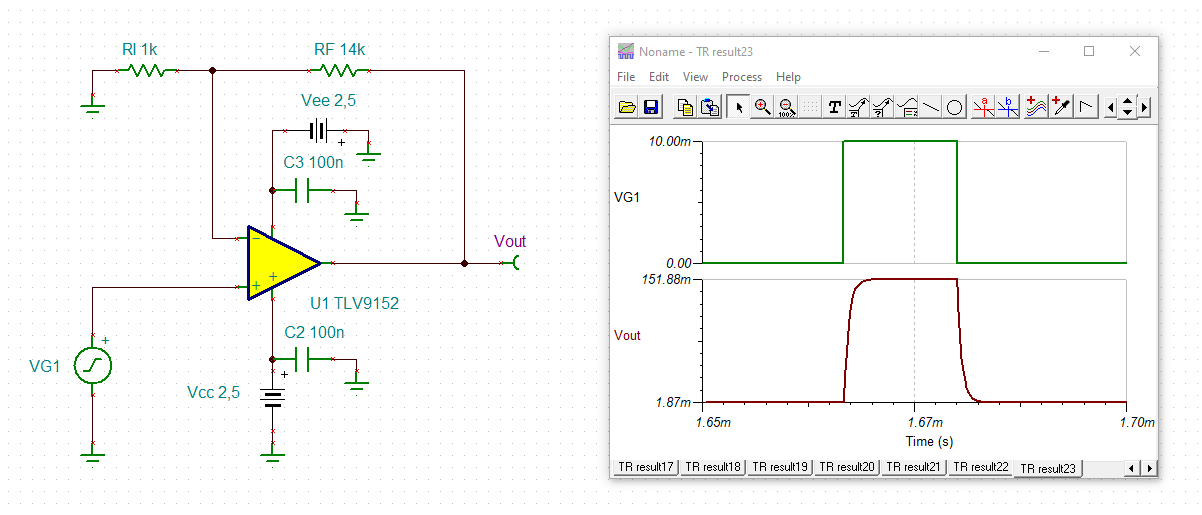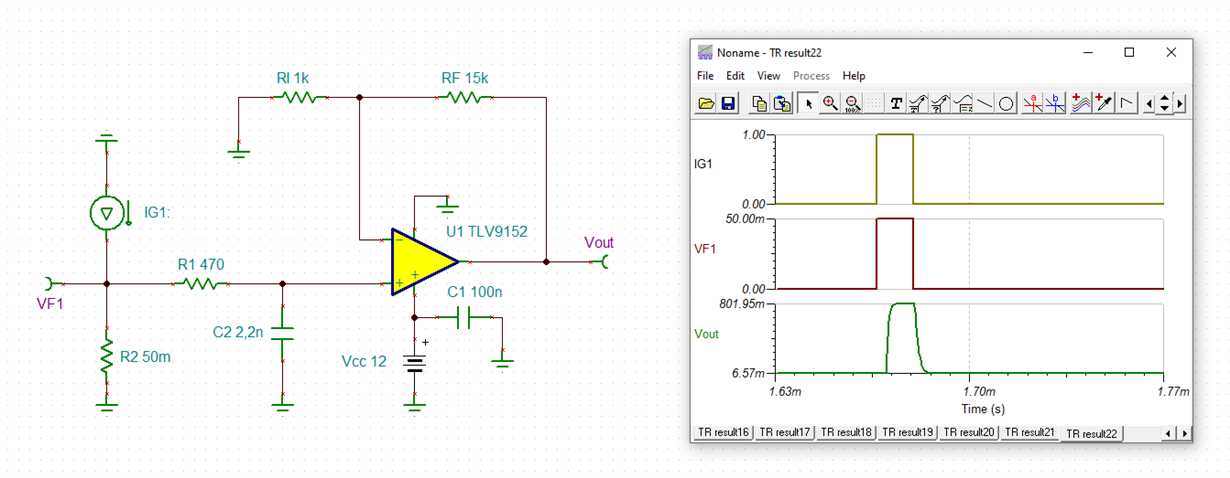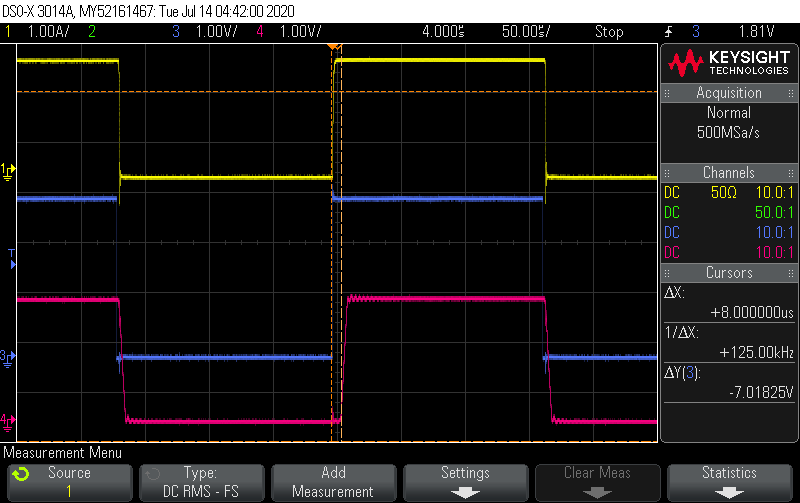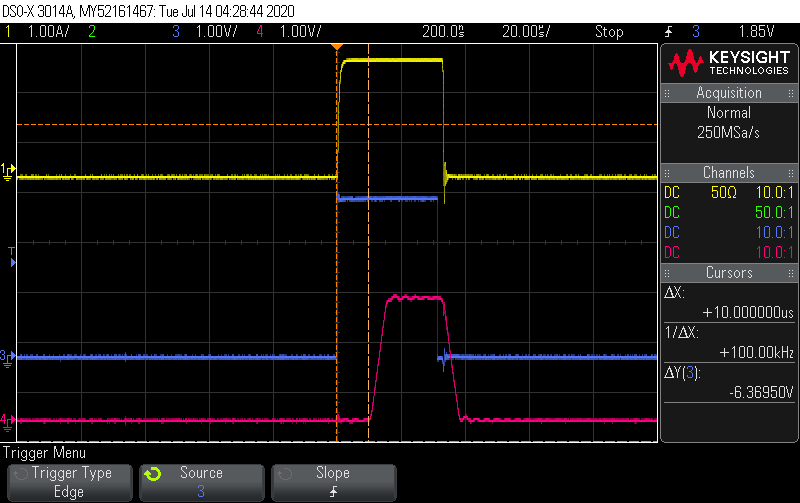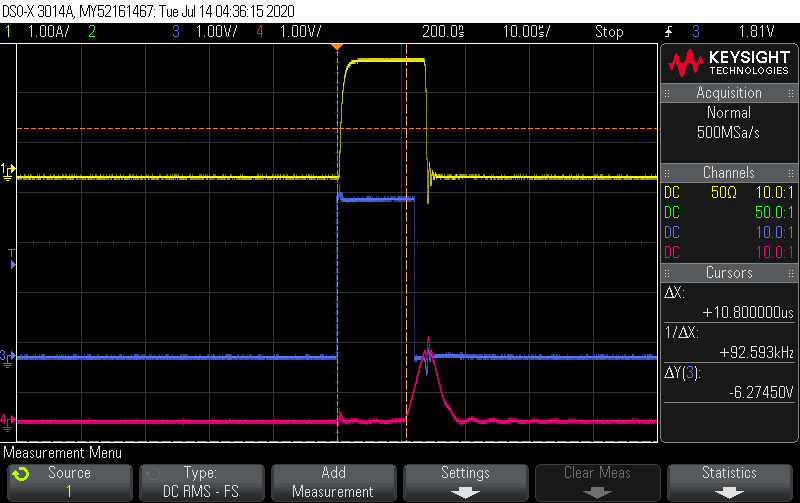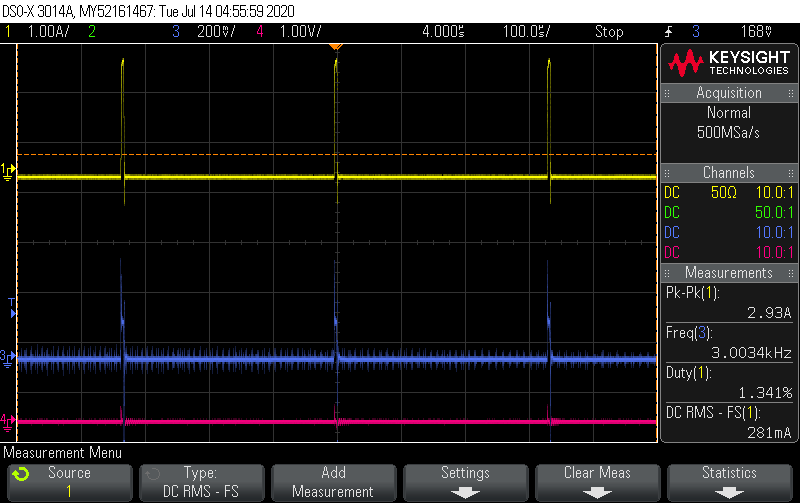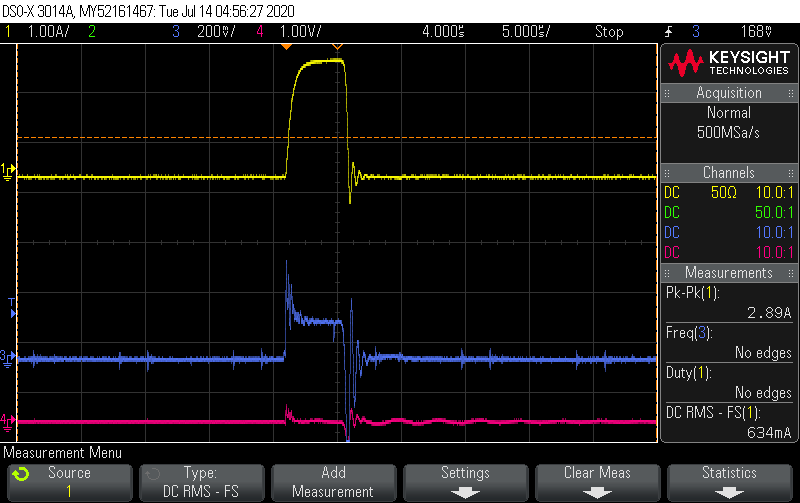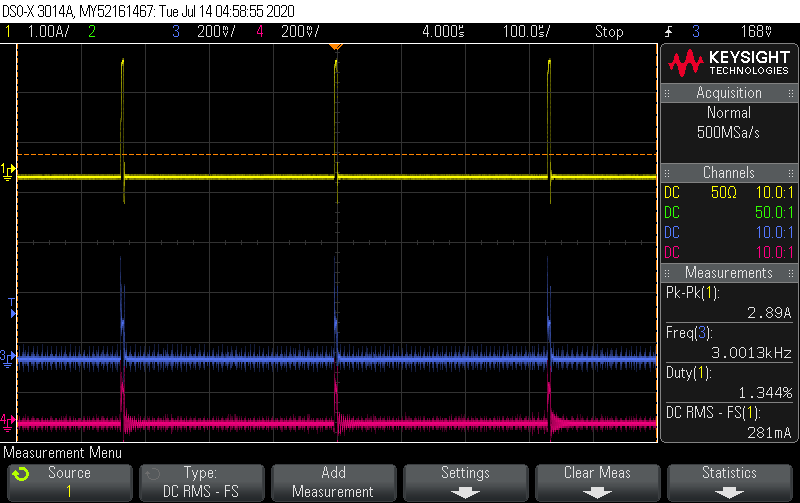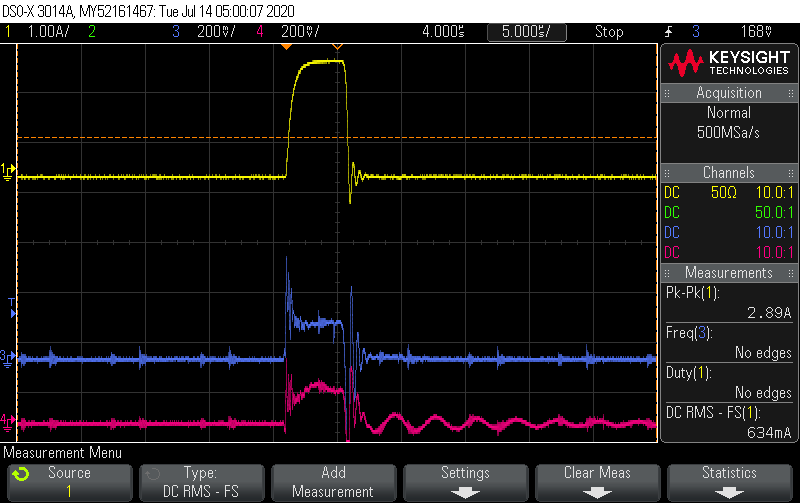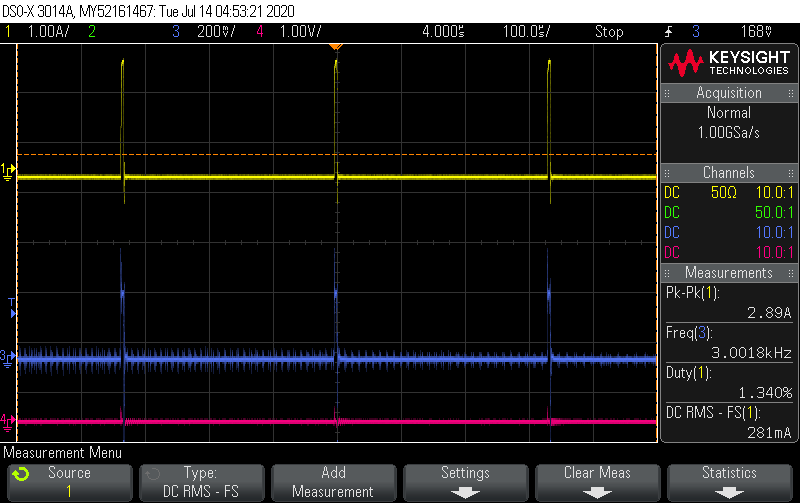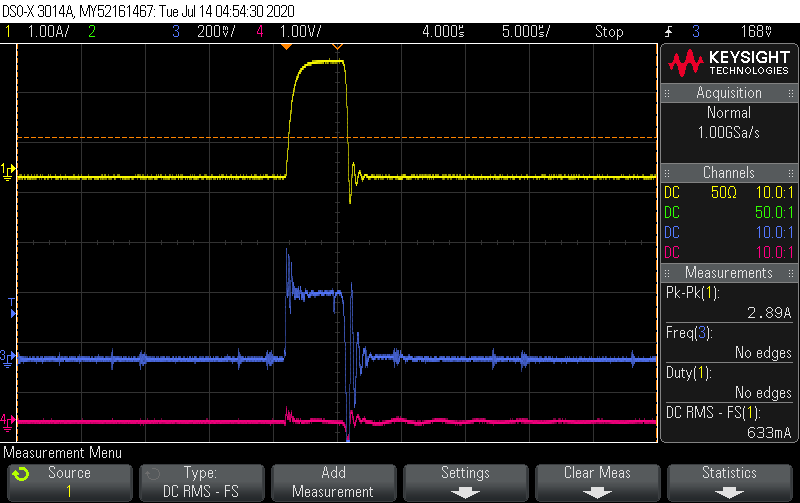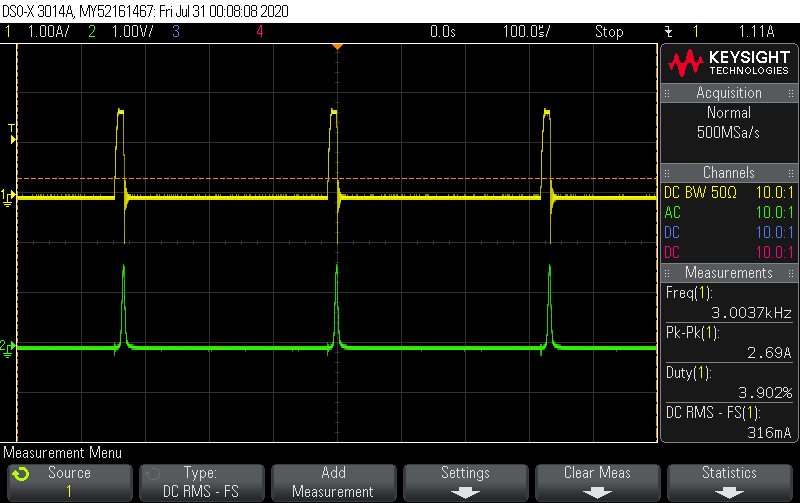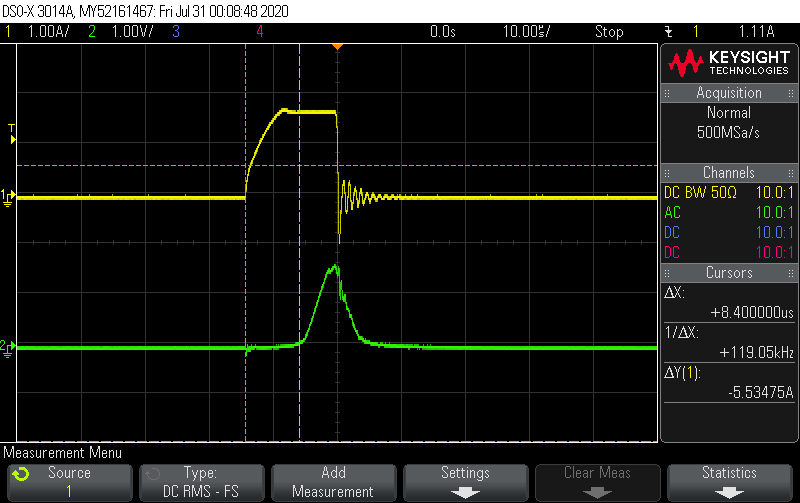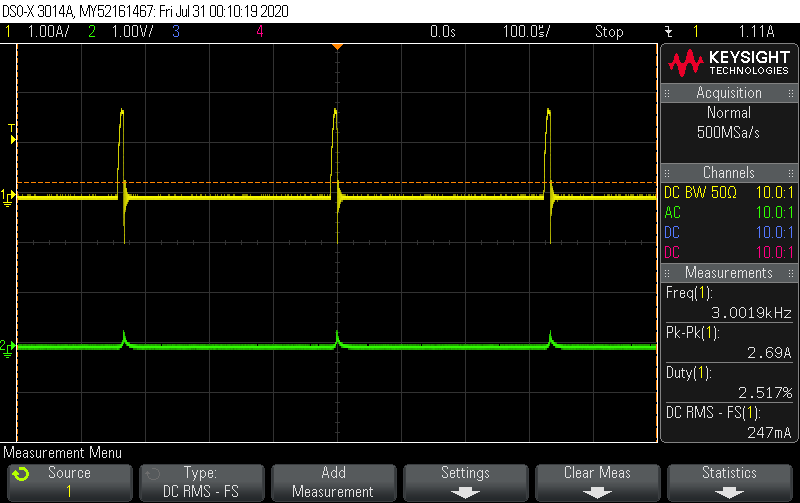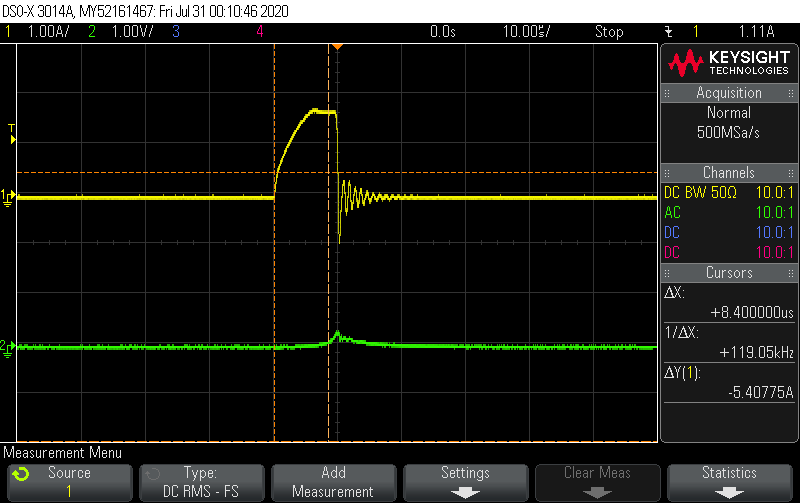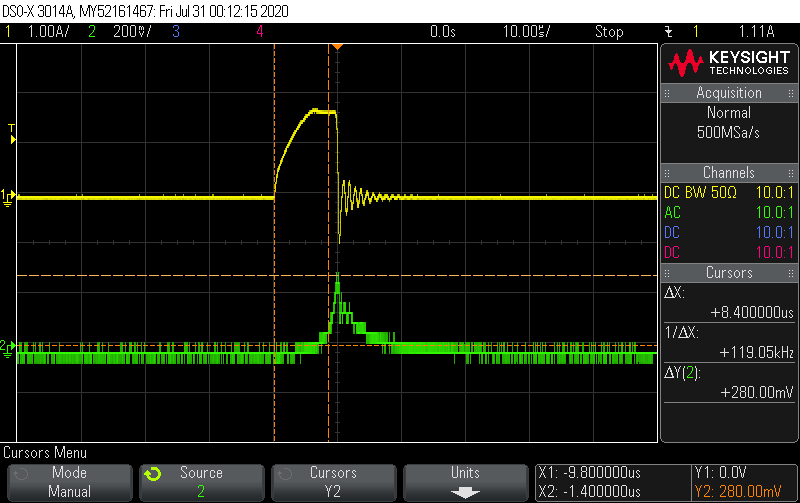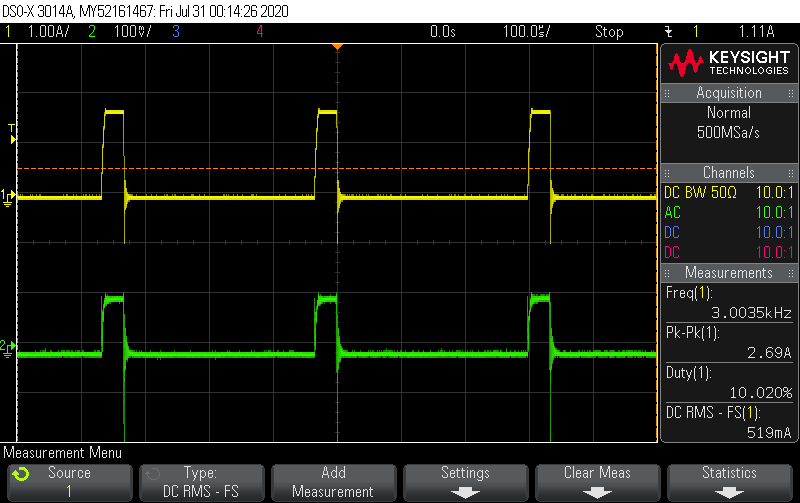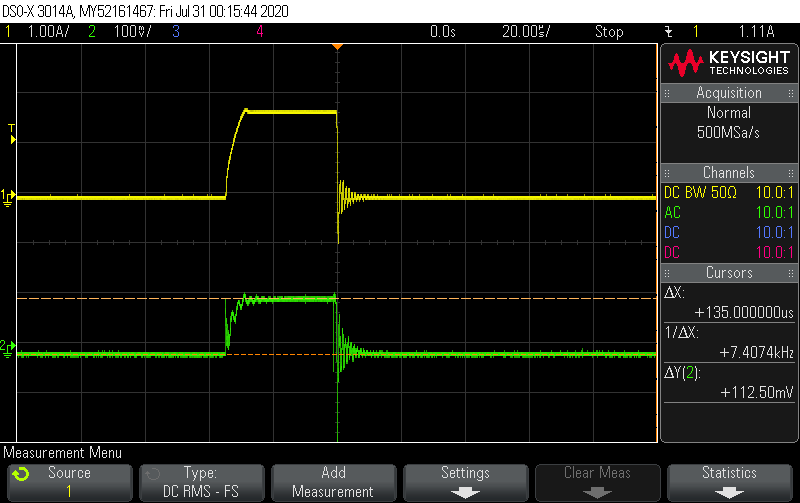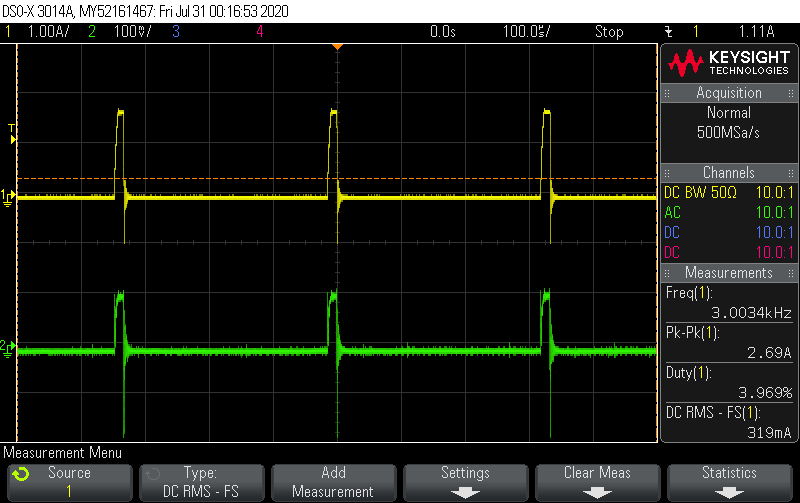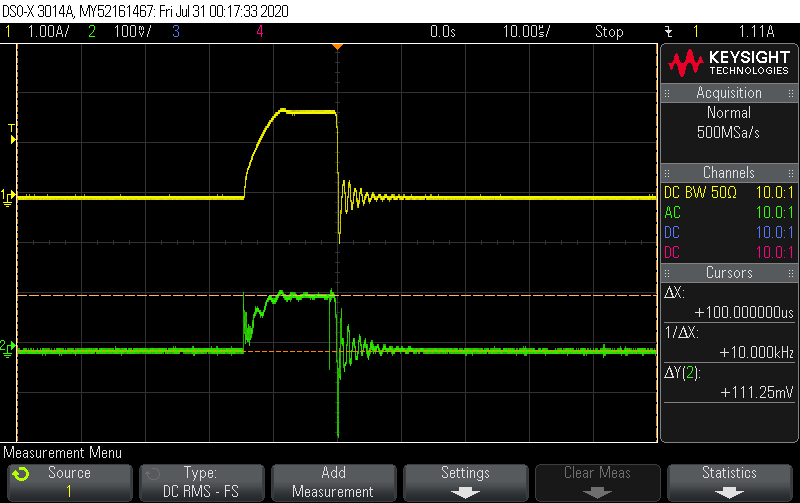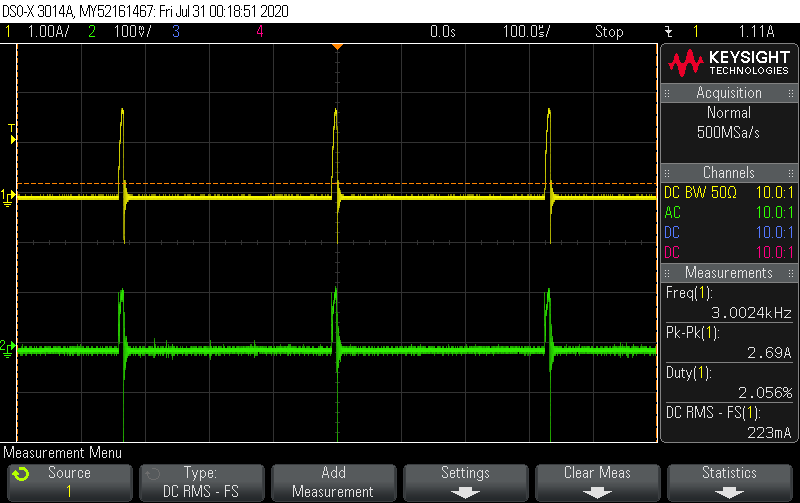Other Parts Discussed in Thread: LM7705
I am using this part as 15 gain amplifier for sensing the current through a load.
Based on an analog 0-10V input, the microcontroller outputs a PWM duty cycle to the LED load; the current is permanently monitored and the value is read through a sense resistor, and amplified to the micro as I-SENSE_CH1 (on sch attached)
Everything works well, except for when PWM<~4% the output of the op amp cuts off; also it looks as it is delayed
Here is the schematic:
Also
I can send some scope shots through email, taken at 50% duty cycle, 10% and 4%
I could not attach here. For some reason does not work.
Thank you



